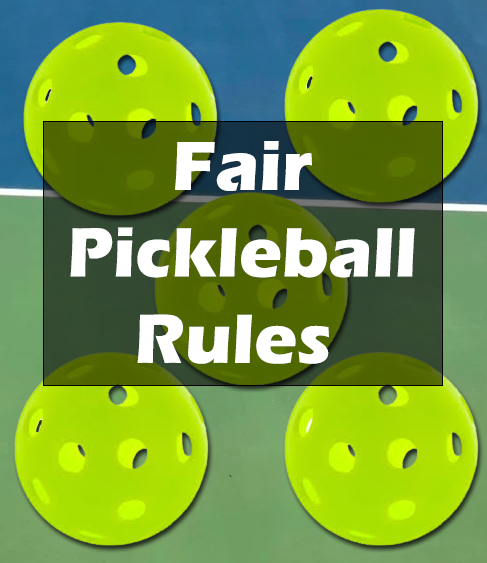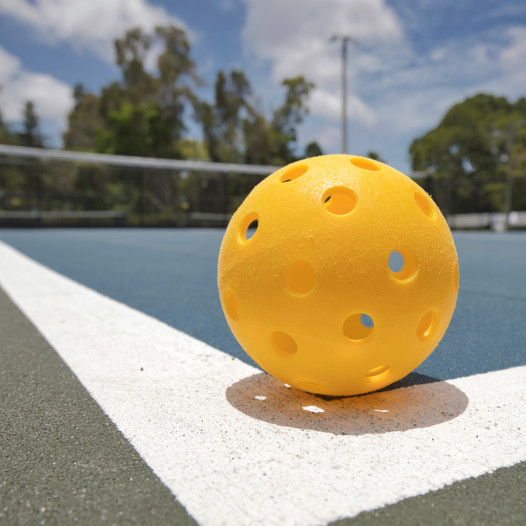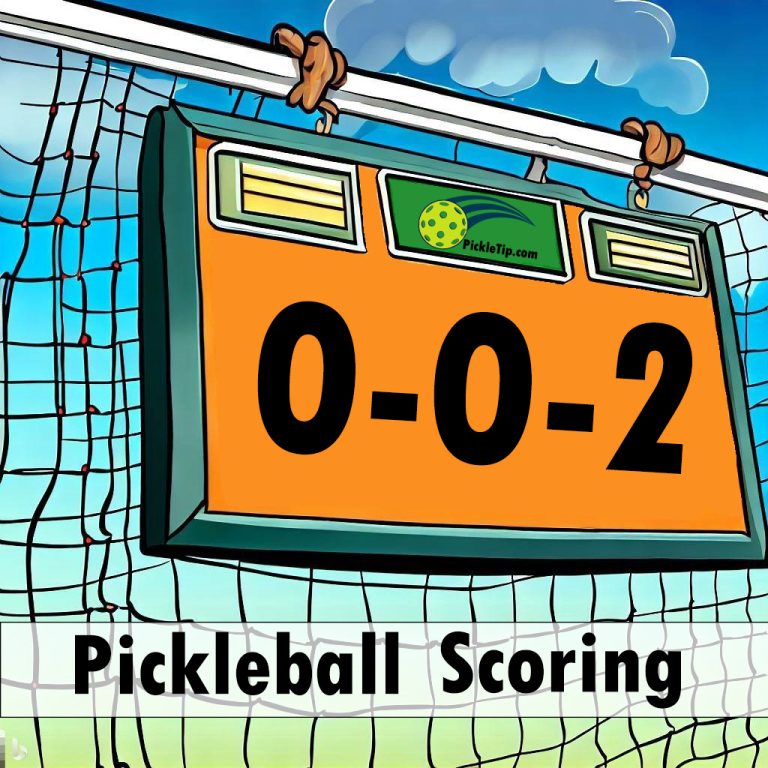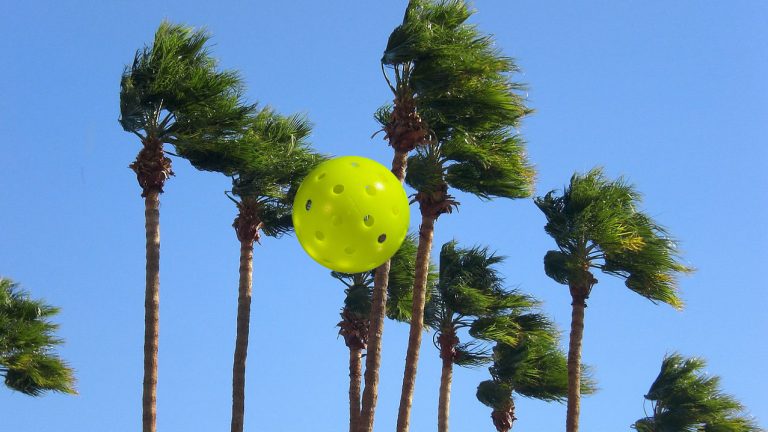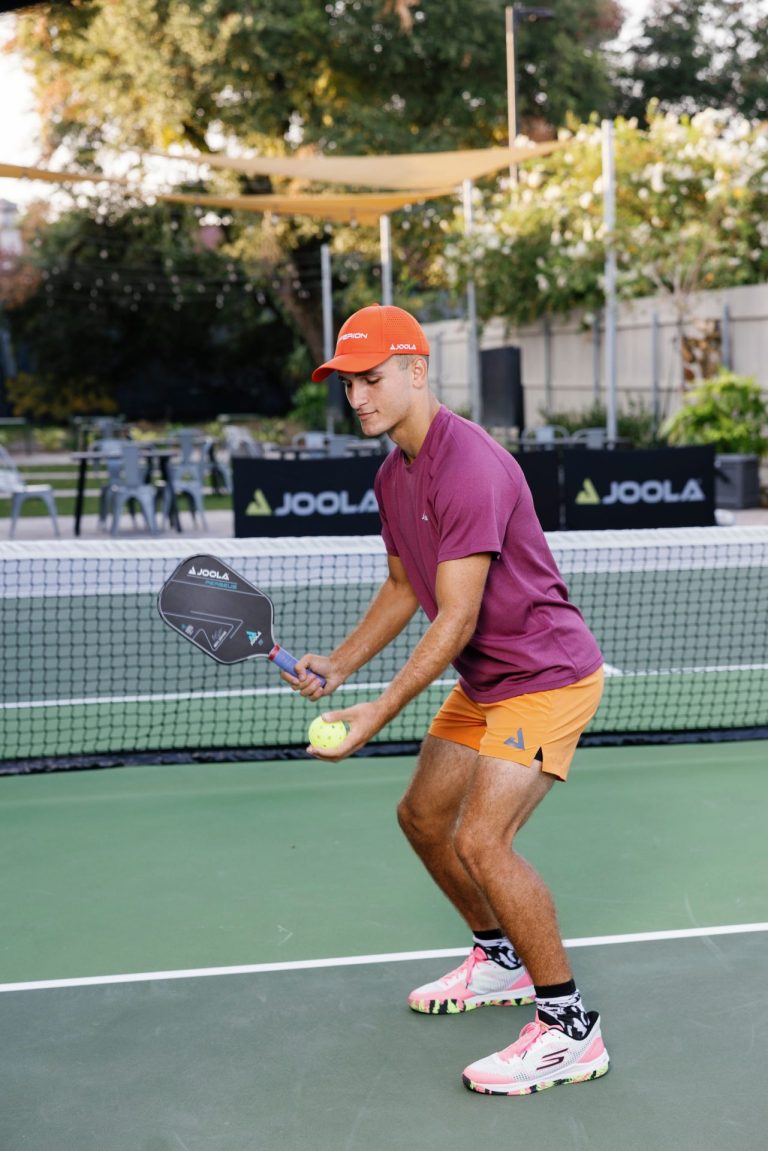Comprehensive Guide to Pickleball
The Ultimate Guide to Pickleball Rules and Gameplay
Pickleball is an enjoyable paddle sport that combines elements of tennis, badminton, and table tennis. Players use composite or wooden paddles and a perforated plastic ball similar to a wiffle ball. They play on a badminton-sized court with a tennis-style net. In this guide to Pickleball, we will explore the basics of the game.
Scoring in Pickleball
In pickleball, only the serving team can score points. The serving team earns points by legally serving the ball and when the opposing team fails to return it or by winning a rally. Typically, players play games to 11 points, with a win-by-two requirement. The USA Pickleball Association (USAPA) also provides alternative formats.
Guide to Pickleball: Serving Rules in Pickleball
Serving Motion, Positioning, and Legal Serve
The server must use an underhand stroke, making contact with the ball below waist level, with the paddle tip below the wrist and the arm moving in an upward arc. At least one foot must be on the court surface behind the baseline, within the imaginary lines extending from the centerline and sideline. A “let” serve occurs when the ball strikes the net and lands within the service court, allowing the server to try again without limit. If a “let” serve hits the receiving team’s partner before touching the court, it is replayed as a let. If the serve hits either opponent before bouncing, the serving team earns a point.
Service Bounce Rule
According to the USAPA‘s Two-Bounce Rule, both the serve and the service return must bounce before players strike them. Each side must play a groundstroke on the first shot following the serve. After these initial groundstrokes, players may volley the ball.
Serve Sequence Rules
At the start of a game, only one player from the serving team serves. The server begins in the right-hand court and must serve crosscourt, beyond the non-volley zone line. The initial server calls the score as “Zero, Zero, Two,” indicating the score and their status as the only server for this sequence. After scoring a point, the server switches sides with their partner for the next serve, never serving to the same opponent or box twice in a row.
When the first serving team faults, the serve transfers or “sideouts” to the opposing team. The receiving team’s first server starts on the right side of the court, calling the score as “Zero, two, one” (their score, opponent’s score, and first server). Each player serves until their team faults or fails to score a point. Once both players on a team have completed their service turns, the serve transfers back to the original starting team, and both players serve in each subsequent sequence.
Non-Volley Zone Rules
The non-volley zone (NVZ) is the rectangular area on the court bounded by the sidelines, the NVZ line, and the net. The airspace above the NVZ surface is not part of the zone. A fault occurs if a player, their clothing, or paddle touches the NVZ while volleying. Faults also occur if a player’s momentum causes them, their clothing, or paddle to touch the NVZ during a volley, even after play has stopped. Players can enter the NVZ at any time, provided they are not volleying the ball. Jumping over the NVZ to the out-of-bounds area while volleying is allowed, as the lines do not extend upward. Note that it is NOT a fault if a player steps into the NVZ when hitting a ball that has bounced.
Faults in Pickleball
Either team can call faults for various reasons, including foot faults, touching the net or post, double bounce, the ball touching a player or their clothing in the air, and other rule violations. A foot fault occurs when a server’s foot encroaches on the court area or is outside the imaginary extension of the sideline and centerline. If the ball hits the side post, it results in a dead ball fault. Catching the ball or getting hit by it is a fault, as the ball must bounce on the court surface without interference. Any NVZ violations are also considered faults.
Guide to Pickleball: Other Basic Pickleball Rules
Hand Hitting the Ball
If the paddle hand below the wrist hits the ball while holding the paddle, it is considered legal. However, if any other part of the body hits the ball, it is a fault.
Out Balls and Calls
A ball is not considered “out” until it bounces. Players should never catch the ball or allow it to hit them while airborne. Calls should be made immediately.
Double/Carry Hits, Switching Hands, and Reaching Over the Net
A ball hit during one continuous single-direction stroke is legal, even if it unintentionally hits twice or gets “carried.” Players may switch the paddle between hands at any time, and they can use two-handed shots. If a ball bounces onto a player’s side of the court and spins back over the net, the player may reach over the net to hit the ball, as long as neither they nor their paddle touch the net.
Faults vs. Partner Communication
A player can call the ball “out” as their partner hits it, provided they make the call immediately. To tell a partner not to hit the ball, players can shout “bounce it,” “let it go,” “no,” or “out.” When a player says “out” before the ball touches the court, it is considered communication between players. When they say “out” after the ball touches the court, it becomes an “out” call that stops play.
Around the Net and Singles Play
It is not a fault if a ball lands in the opponent’s court by traveling around the post without passing directly over the net. For singles play, all doubles play rules apply, with the exception that players serve from the right-hand court when the score is even and from the left-hand court when the score is odd.
Guide to Pickleball: Conduct of Play and Line Calling
Pickleball is a friendly and social game that requires ethical and proper conduct at all times. Line calling is based on the honor system and good sportsmanship. Players should defer to the closest player with the best visual angle, favor opponents on questionable calls, and make immediate calls. When requesting an opponent’s opinion, players should accept their response. Players should strive to make the fairest call possible and maintain a positive attitude and demeanor, as everyone makes bad calls occasionally.
Respecting Opponents and Maintaining a Positive Atmosphere
Part of maintaining proper conduct during pickleball matches is respecting your opponents and fostering a positive atmosphere. Players should always display good sportsmanship, be courteous, and encourage fair play. Acknowledge good shots from opponents and avoid excessive celebrations or negative reactions.
Resolving Disputes and Seeking Help
In the event of a disagreement or dispute during a match, players should first try to resolve the issue themselves. If they cannot reach a resolution, they may seek assistance from a referee, tournament official, or club representative, depending on the context of the game.
Punctuality and Preparation
Players should arrive on time for scheduled matches and be ready to play when called upon. They should use proper attire and equipment and familiarize themselves with the rules of the game beforehand.
Safety and Court Etiquette
Safety should always be a priority for all players. Be aware of your surroundings and avoid making dangerous or reckless plays that could result in injury. Keep the court area clean and free of hazards and follow proper court etiquette, such as waiting for a break in play before entering or crossing a court.
Guide to Pickleball: Pickleball Tips for Beginners
Develop Consistent and Accurate Serves
A strong and accurate serve is a key foundation for any pickleball player. Practice serving consistently into the opponent’s service court to start each rally on a strong note and put pressure on the receiving team.
Focus on Ball Control and Placement
Instead of trying to hit the ball as hard as possible, focus on controlling your shots and placing them strategically on the court. Aim for deep returns and soft dinks to keep your opponents off balance and create opportunities for winning points.
Improve Footwork and Court Positioning
Good footwork and court positioning are crucial for success in pickleball. Improve your agility, speed, and anticipation to cover the court effectively and reach shots quickly. Maintain proper positioning relative to your partner in doubles play, and always stay prepared to move and adjust.
Learn and Utilize Different Shots
A well-rounded player has a variety of shots in their arsenal. Develop your skills in executing different types of shots, such as volleys, lobs, and drop shots. Knowing when and how to use these shots effectively can make a significant difference in your game.
Practice Patience and Strategy
Pickleball is a game of strategy and patience. Avoid trying to force a winning shot too early in a rally. Instead, focus on building the point through smart shot selection and waiting for the right opportunity to attack.
Guide to Pickleball: By understanding and adhering to the rules and proper conduct of pickleball, players can enjoy a fun, competitive, and sportsmanlike experience. With practice, patience, and continuous improvement, anyone can excel in this popular and growing sport.


